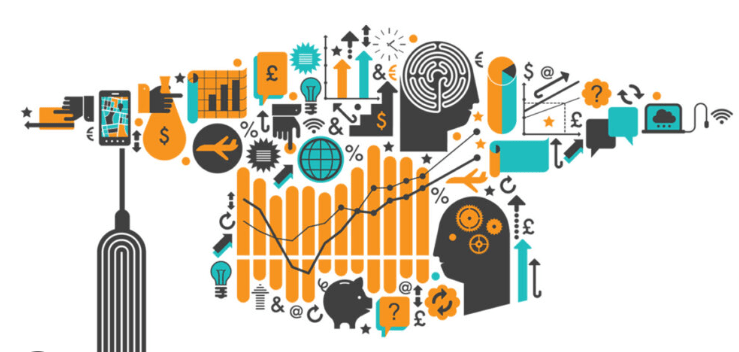Ever felt like you’re wrestling with the role of statistics in machine learning? Believe me, I get it. This complex challenge isn’t for the faint-hearted. But did you realize that it’s actually statistical techniques that lie at the heart of machine-learning models, helping to tease out insights from mounds of data?
Hang tight; this blog post is crafted to break down this intriguing fusion into an easy-peasy guide.
Key Takeaways
- Statistics provides the necessary tools and techniques for analyzing data, making predictions, and gaining insights into machine learning.
- Understanding important statistical terminologies like population and sample, measures of central tendency, variance and standard deviation is crucial in machine learning.
- Probability plays a crucial role in understanding and predicting outcomes in machine learning.
- Statistics is fundamental to machine learning as it helps analyze data, make predictions, and gain insights.
- Key statistical terminologies like population and sample, measures of central tendency, variance and standard deviation are important to understand in machine learning.
- Probability is essential for understanding and predicting outcomes in machine learning.
The Basics of Statistics for Machine Learning
Statistics is a fundamental aspect of machine learning, providing the necessary tools and techniques for analyzing data, making predictions, and gaining insights.
What is Statistics?
Statistics is a branch of mathematics that focuses on the collection, analysis, interpretation, presentation, and organization of data. It gives us tools to make sense of raw information by taking enormous amounts of data and transforming them into useful insights.
Through numerical data analysis, statistics helps predict future trends or behaviours in an easy-to-understand manner. It plays a vital role in various fields like business, physics, social sciences, and even health studies.
In every piece of collected information lies potential knowledge waiting to be unveiled through statistical methods.
The Use of Statistics in Machine Learning
Statistics play a crucial role in machine learning processes. They provide the foundational tools and techniques used to decipher complex patterns and relationships within data sets.
In essence, they form the bedrock for creating more accurate predictive models in machine learning. Analysis grounded in statistics allows us to understand input data better, thus improving our ability to make more robust predictions and decisions based on these insights.
For instance, understanding the shape of your data using statistical methods can give you valuable information about its properties. This vital knowledge aids machine learning algorithms’ function at their optimum level, ultimately leading to improved outcomes from artificial intelligence applications or other forms of decision-making solutions.

Important Terminologies in Statistics
In statistics, it is essential to understand important terminologies like population and sample, measures of central tendency, and variance and standard deviation.
Population and Sample
In statistics and machine learning, we often deal with a population and a sample. The population includes all members of a defined group that we are studying or collecting information on for data-driven decisions in machine learning.
For instance, if you’re designing an AI to predict weather patterns, the population could be all the recorded weather data available globally. On the other hand, a sample is just part of the whole population selected to represent it faithfully.
Since it’s nearly impossible to gather data from every single entity in our population due to time and resource constraints, we instead take a smaller but representative sample for analysis.
This targeted sampling allows us to draw conclusions about the greater population based on our findings from this subset.
Measures of Central Tendency
Measures of central tendency are statistical values that summarize the centre or typical value of a dataset. They help us understand the average, or middle point, of a distribution.
The most commonly used measures of central tendency are the mean, median, and mode. The mean is calculated by adding up all the values in a dataset and dividing by the number of values.
The median is the middle value when the data is arranged in ascending order, and if there are two middle values, it’s their average. The mode represents the most frequently occurring value in a dataset.
Variance and Standard Deviation
Understanding variance and standard deviation is essential in statistics for machine learning. Variance measures the spread or variability of data points from the mean, while standard deviation quantifies the average distance between each data point and the mean.
These measures help us understand how much individual values differ from the overall average, providing insights into data distribution and patterns.
Variance and standard deviation play a crucial role in understanding statistical models and machine learning algorithms. They enable us to assess the reliability of our predictions or estimates by evaluating how close our results are to the true value.
By analyzing these measures, we can identify outliers or unusual observations that might affect our analysis. Additionally, variance and standard deviation assist in feature selection, determining which variables contribute most significantly to model performance.

Understanding Probability
Probability is the likelihood of an event occurring, and in machine learning, it plays a crucial role in understanding and predicting outcomes.
What is Probability?
Probability is a fundamental concept in statistics and machine learning. It is the measure of how likely an event or outcome is to occur. In simple terms, probability helps us understand the chances of something happening by assigning a numerical value between 0 and 1, where 0 represents no chance and 1 represents certainty.
By analyzing probabilities, we can make informed decisions, estimate uncertainty, and predict outcomes based on available data. Probability plays a crucial role in statistical inference and modelling in machine learning by quantifying uncertainty and enabling us to make accurate predictions.
Random Variables
Random variables are a fundamental concept in statistics and machine learning. They represent the possible outcomes of an experiment or observation that can be assigned a numerical value.
Random variables can be discrete, like the outcome of flipping a coin, or continuous, like measuring someone’s height. By understanding random variables, we can analyze and make predictions about real-world data using statistical techniques.
It is essential to grasp this concept to build accurate models and draw meaningful insights from our data-driven analyses.
Types of Probability Distributions
In this section, we will explore the different types of probability distributions, including discrete and continuous distributions.

Discrete Probability Distributions
Discrete probability distributions is a key concept in statistics, particularly in the realm of machine learning. It’s essential to understand this concept as it forms the foundation for many machine learning algorithms.
| Distribution | Definition | Application in Machine Learning |
|---|---|---|
| Uniform Distribution | This is a type of probability distribution in which all outcomes are equally likely. | Often utilized in machine learning to initialize the weights of a neural network to small, random values. |
| Bernoulli Distribution | A probability distribution of a random variable which takes a binary, 0-1 outcome. | Used in binary classification problems in machine learning, especially in logistic regression and naive bayes classifier. |
| Binomial Distribution | A distribution where only two outcomes are possible, such as success or failure, and where the probability of success and failure is same for all the trials. | Used in machine learning for modeling the number of successes in samples of a given size from a population of binary observations. |
| Poisson Distribution | Applies when the event can occur a certain number of times within a given time or space interval. | Used in machine learning for modeling count data and understanding event frequency. |
Understanding these discrete probability distributions and their applications is crucial for building effective machine-learning models. They provide valuable insights about the data and aid in visualizing complex patterns.
Continuous Probability Distributions
In the world of statistics, Continuous Probability Distributions play a significant role, especially in the field of Machine Learning.
| Distributions | Description | Usage in Machine Learning |
|---|---|---|
| Normal Distribution | Also known as Gaussian distribution, it’s a continuous probability distribution that is symmetrical on both sides, forming a bell-shaped curve. | Used in many machine learning algorithms like Linear regression, Logistic regression, and Neural Networks due to its nice statistical properties. |
| Exponential Distribution | This distribution describes the time between events in a Poisson point process, i.e., a process in which events occur continuously and independently at a constant average rate. | Commonly used for survival analysis, where the model describes time to an event of interest. |
| Uniform Distribution | In this distribution, all outcomes are equally likely; each variable has the same probability that it will be the outcome. | Used in machine learning to initialize the weights of the artificial neural network to small random numbers. Also used in operations research and decision theory. |
Continuous Probability Distributions are a crucial part of machine learning algorithms, significantly aiding in accurate predictions and inference. They enable us to understand the data structure and provide deeper insights, becoming an essential aspect of learning Machine Learning from scratch. By understanding the shape of data through these distributions, we can gain valuable information about the data, contributing towards more robust machine learning models.
How Statistics Relates to Machine Learning
Statistics plays a crucial role in machine learning by providing the techniques and tools necessary for analyzing data, making predictions, and building accurate models.
Why Statistics Matter in Machine Learning
Statistics matter in machine learning because they provide the foundation for understanding and analyzing data. By using statistical techniques, we can uncover patterns, make predictions, and gain deeper insights into complex datasets.
Probability and statistics are essential components to learn in order to understand machine learning from scratch. Understanding statistics allows us to determine the shape of data, which is crucial for selecting appropriate models and making accurate predictions.
In summary, statistics plays a crucial role in machine learning by providing the tools and methods necessary to transform raw data into meaningful information that can drive decision-making processes.
The Role of Statistics in Machine Learning
Statistics plays a crucial role in machine learning by providing the foundation for data-driven models and insights. Understanding statistics is essential for analyzing and visualizing complex patterns in data, as well as making accurate predictions.
By applying statistical techniques, such as regression analysis and classification algorithms, machine learning models can uncover relationships between variables and make informed decisions.
Statistics also helps in feature selection, model evaluation, and data preprocessing to ensure the accuracy and reliability of machine learning algorithms. Overall, statistics serves as a powerful tool in the field of machine learning, enabling us to harness the potential of artificial intelligence for solving real-world problems.

Popular Statistical Machine Learning Techniques
In my experience, there are several popular statistical machine-learning techniques that are widely used in the field. These techniques include:
| Technique | Description |
|---|---|
| Supervised Learning | Train models on labelled data to make predictions or classifications on new, unseen data. |
| Unsupervised Learning | Analyze unlabeled data to discover patterns and relationships without predefined outcomes. |
| Regression Analysis | Establish relationships between variables and predict continuous outcomes. |
| Classification Algorithms | Assign categorical labels to data points based on their features, used in tasks like spam detection, sentiment analysis, or image recognition. |
| Feature Selection | Identify relevant features from a dataset for building accurate and interpretable models. |
| Model Evaluation | Evaluate model performance using techniques like cross-validation and confusion matrices. |
| Data Preprocessing | Clean, transform, and normalize raw data using techniques like scaling, imputation, and outlier detection. |
Relation Between Traditional Statistics and Machine Learning
Traditional statistics and machine learning are closely intertwined, with each field drawing on the strengths of the other. While traditional statistics focuses on analyzing data to uncover patterns and make inferences about a population, machine learning takes a more data-driven approach by using algorithms to learn from historical data and make predictions about future outcomes.
In essence, traditional statistics provides the foundation for understanding the principles of uncertainty, hypothesis testing, and statistical inference that underpin machine learning techniques.
By combining these two disciplines, we can leverage the power of statistical methods to create accurate predictive models and gain valuable insights from complex datasets without sacrificing interpretability.
Conclusion
In conclusion, understanding the fusion of statistics and machine learning is crucial for anyone interested in data-driven insights and predictions. This simple guide has provided an introduction to statistical techniques in machine learning, emphasizing the powerful role that statistics plays in analyzing and visualizing complex patterns.
By grasping the fundamentals of probability and statistics, you’ll be equipped to dive deeper into the world of machine learning and unlock its full potential.
Frequently Asked Questions
What is machine learning in statistics?
Machine learning in statistics refers to the use of algorithms and statistical techniques to enable computer systems to learn from data, make predictions or decisions, and improve their performance over time.
How does machine learning differ from traditional statistical methods?
Unlike traditional statistical methods that rely on predefined models and assumptions, machine learning allows computers to automatically discover patterns and relationships in data without being explicitly programmed.
What are some common applications of machine learning in statistics?
Machine learning finds applications in various fields such as finance, healthcare, marketing, recommendation systems, fraud detection, image recognition, natural language processing, and many more.
Do I need programming skills to understand machine learning in statistics?
While having programming skills can be helpful for implementing machine learning algorithms, understanding the basic concepts and principles of statistics is sufficient to grasp the fundamentals of machine learning.
Can you provide an example of how machine learning is applied in statistics?
Sure! For example, a company may use a classification algorithm to predict whether a customer is likely to churn based on their purchasing behavior and demographic information. This can help them proactively target those customers with retention strategies.



